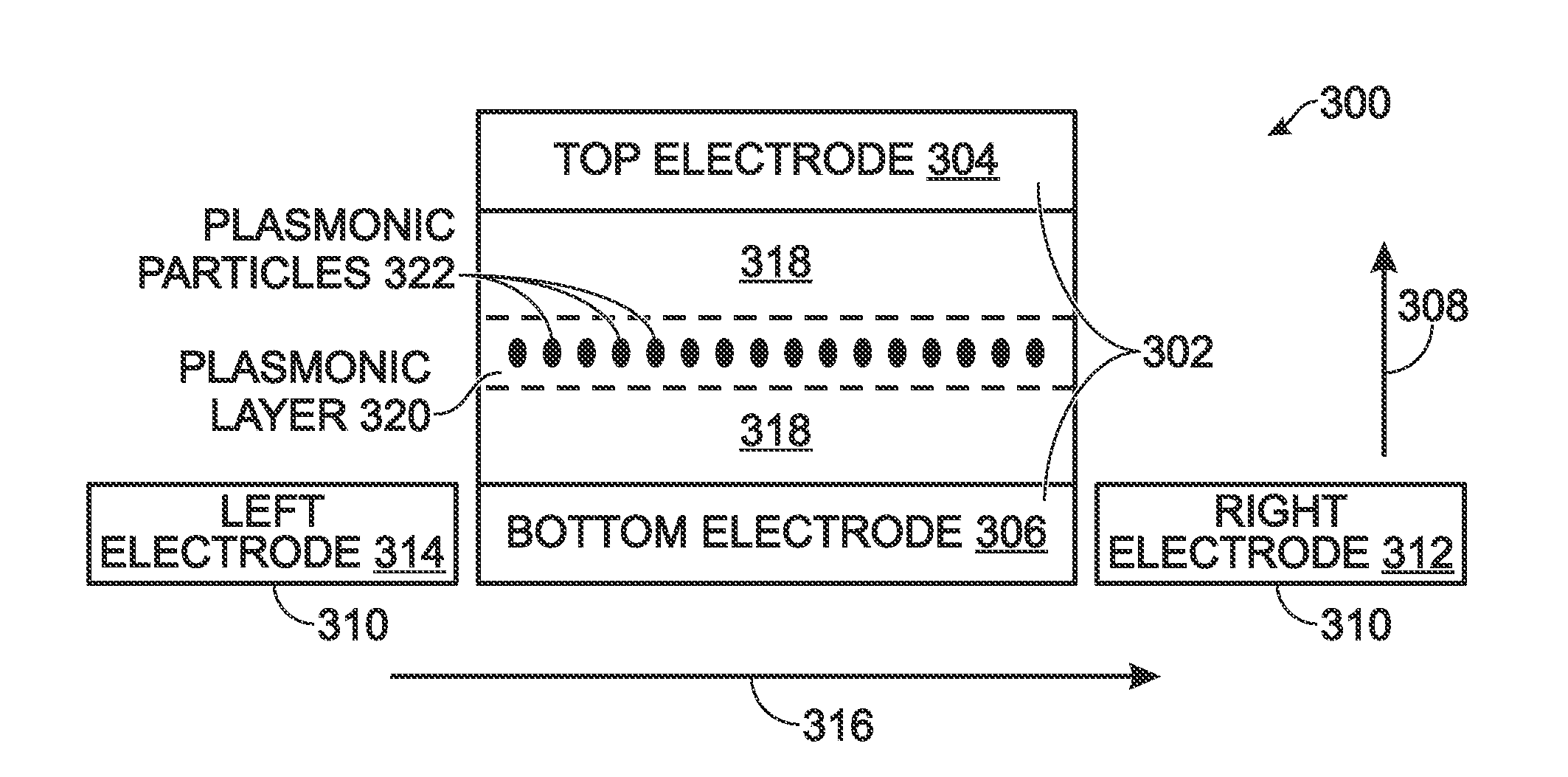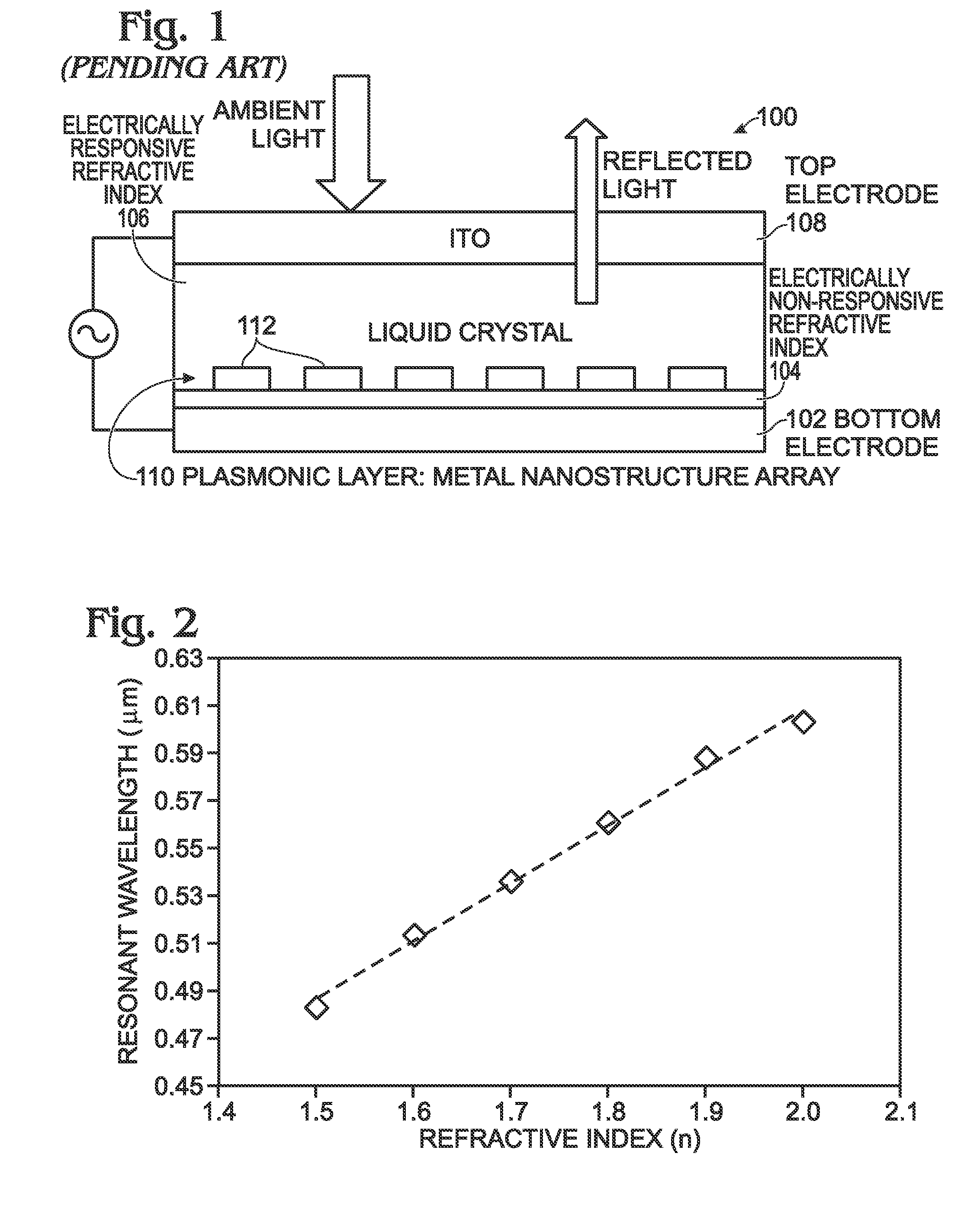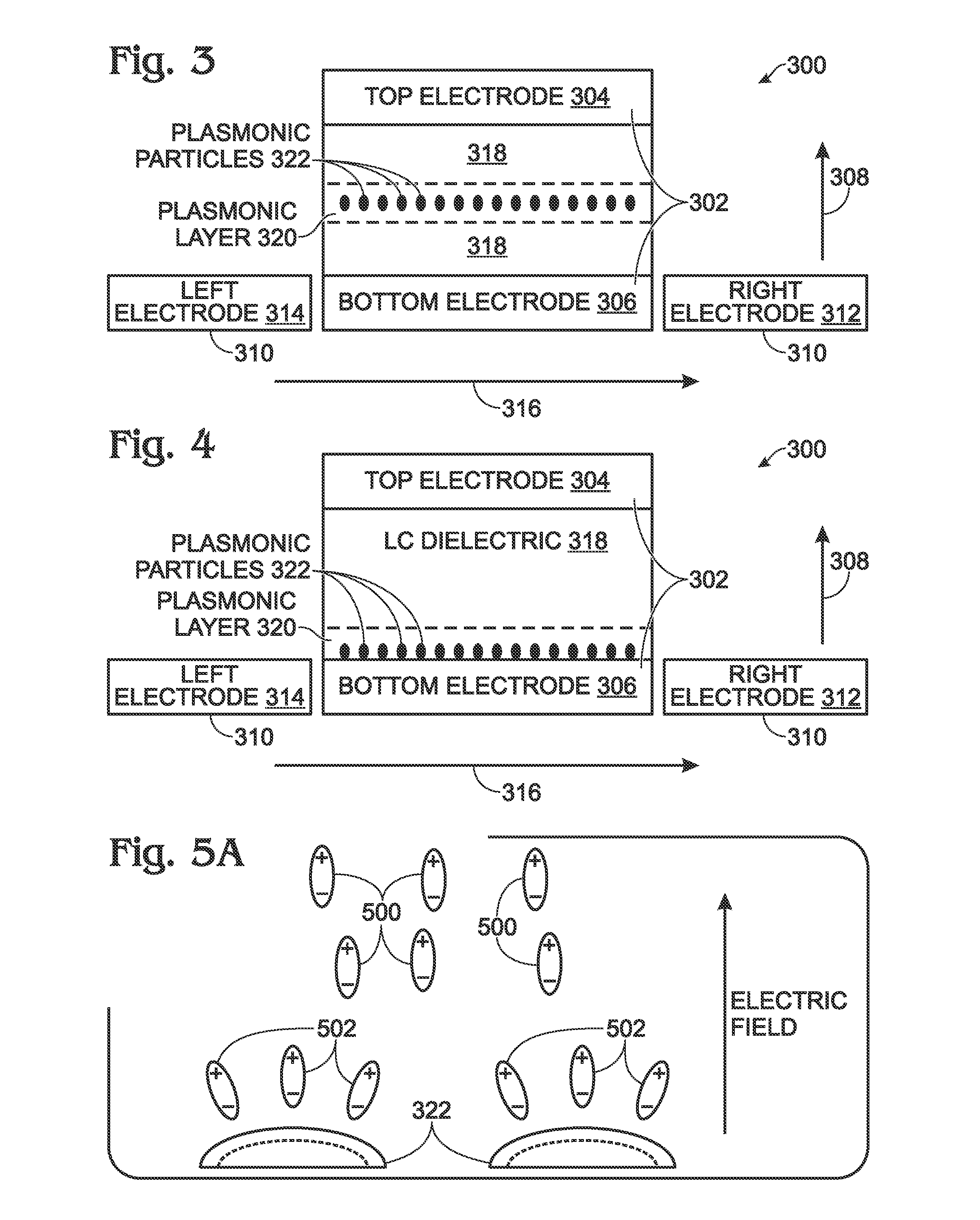Plasmonic device tuned using liquid crystal molecule dipole control
a plasmonic display and liquid crystal molecule technology, applied in liquid crystal compositions, instruments, chemistry apparatuses and processes, etc., can solve the problems of wasting the available light energy provided by the surroundings, requiring additional power to overcome the ambient light of the display, and display technologies all have disadvantages or challenges to overcome, so as to achieve fast video applications, enhance the color tuning range of the nanoplasmonic display, and enhance the effect of the color tuning rang
- Summary
- Abstract
- Description
- Claims
- Application Information
AI Technical Summary
Benefits of technology
Problems solved by technology
Method used
Image
Examples
Embodiment Construction
[0036]FIG. 3 is a partial cross-sectional view of a plasmonic display device with liquid crystal dipole molecule control. The device 300 comprises a first set of electrodes 302 including at least one electrically conductive top electrode 304 and at least one electrically conductive bottom electrode 306, capable of generating a first electric field in a first direction 308. A second set of electrodes 310 includes an electrically conductive right electrode 312 and an electrically conductive left electrode 314. The second set of electrodes 310 is capable of generating a second electric field in a second first direction 316. A dielectric layer 318 overlies the bottom electrode 306, made from a liquid crystal material with molecules having dipoles responsive to an electric field. A plasmonic layer 320, including a plurality of discrete plasmonic particles 322, is interposed between the first set of electrodes 302 and second set of electrodes 310, and in contact with the dielectric layer ...
PUM
| Property | Measurement | Unit |
|---|---|---|
| size | aaaaa | aaaaa |
| diameter | aaaaa | aaaaa |
| electric field | aaaaa | aaaaa |
Abstract
Description
Claims
Application Information
 Login to View More
Login to View More - R&D
- Intellectual Property
- Life Sciences
- Materials
- Tech Scout
- Unparalleled Data Quality
- Higher Quality Content
- 60% Fewer Hallucinations
Browse by: Latest US Patents, China's latest patents, Technical Efficacy Thesaurus, Application Domain, Technology Topic, Popular Technical Reports.
© 2025 PatSnap. All rights reserved.Legal|Privacy policy|Modern Slavery Act Transparency Statement|Sitemap|About US| Contact US: help@patsnap.com



